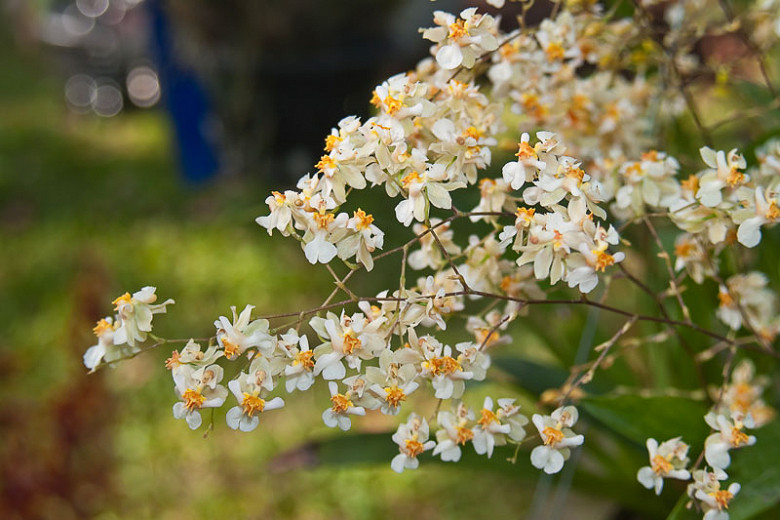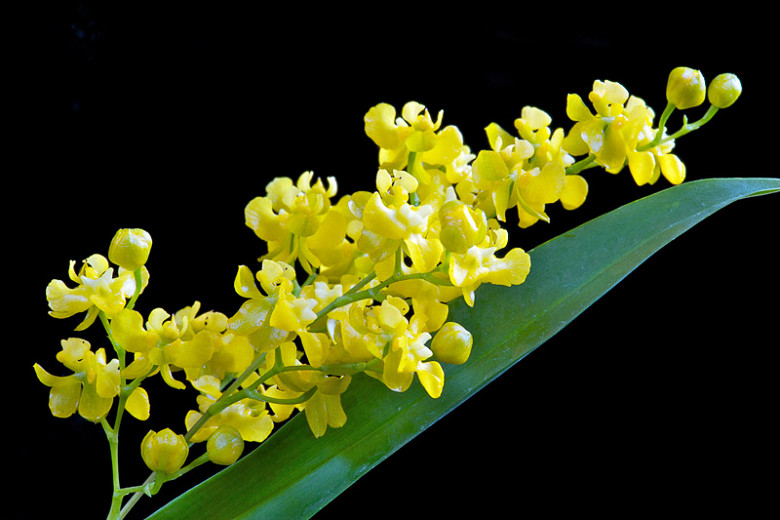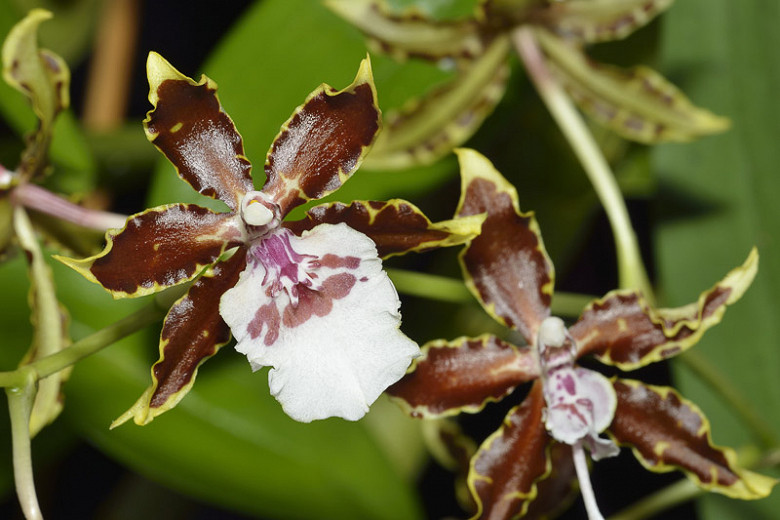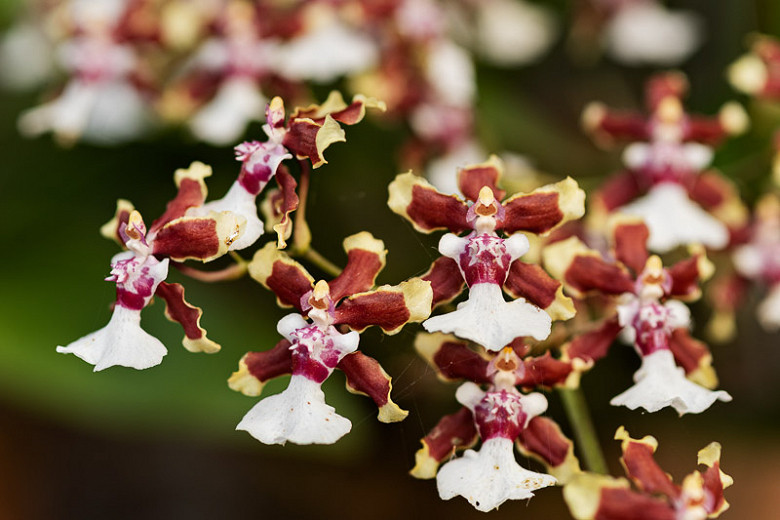Oncidium lanceanum (Lances Trichocentrum)
Oncidium lanceanum (Lance’s Trichocentrum) is an epiphytic orchid boasting pretty racemes of 10-12 magnificent, very fragrant waxy flowers. Blooming in the spring, summer, and fall, the long-lasting blossoms, 2.5 in. across (6 cm), are yellow splotched with chocolate or purple-brown dots and adorned with a long purple lip. The flowers last for 4-5 weeks, if the plant is kept dry, and a strong spicy scent is felt even after the flower has dried.
Oncidium lanceanum (Lance's Trichocentrum) is an epiphytic orchid boasting pretty racemes of 10-12 magnificent, very fragrant waxy flowers. Blooming in the spring, summer, and fall, the long-lasting blossoms, 2.5 in. across (6 cm), are yellow splotched with chocolate or purple-brown dots and adorned with a long purple lip. The flowers last for 4-5 weeks, if the plant is kept dry, and a strong spicy scent is felt even after the flower has dried. The thick, speckled foliage of broad red/brown spotted leathery leaves is also attractive. Native to Colombia, Venezuela, Brazil, Peru, Guyana, Suriname, Trinidad, and the Caribbean, Oncidium lanceanum is a hot to cool growing orchid species found at elevations of 980-1640 ft. (300-500 m).
- Grows up to 16 in. tall (40 cm).
- Grow in a fine-grade, bark-based epiphytic orchid compost. Provide bright filtered light and good ventilation.
- Needs a minimum night temperature of 68-71°F (20-22°C) and a daytime temperature of 86-91°F (30-33°C).
- Maintain adequate humidity (75-85%) throughout the year by setting the plant on a tray of gravel, partially filled with water, so that the pot never sits in the water. The higher temperature, the higher the humidity should be.
- Water regularly throughout the growing season, but allow the compost to become a little dry between waterings. Reduce watering to once a month or less in winter.
- Do not overwater. Oncidiums are prone to rot.
- During the growing season, feed with a weak, diluted orchid fertilizer every second or third watering. Mist regularly for high humidity.
- Reduce watering in winter and allow a 4-week dry rest.
- Propagate by division when plants are large enough to be divided into clumps of 2 – 3 pseudobulbs and overflowing the pot.
- Once the flowers have faded, remove the spent flower spikes.
- Oncidiums do not like root disturbance and should only be repotted when either the compost becomes broken down or the pot becomes too small for the new growth. They like to be slightly underpotted in a very free-draining bark-based potting media. The best time for repotting is the period when new sprouts reach a size of 2 in. (5 cm) and begin to grow their own roots.
- Generally disease free. Keep an eye out for aphids, glasshouse red spider mite, and mealybugs.
- Native to Colombia, Venezuela, Brazil, Peru, Guyana, Suriname, Trinidad, and the Caribbean.
Tip for reblooming
- If a plant is large and healthy but does not produce flowers in a reasonable time, then move your plant to a brighter location or a location that gets an hour or two of the early morning sun.
Requirements
| Hardiness | 10 – 12 |
|---|---|
| Plant Type | Orchids |
| Plant Family | Oncidium – Dancing Lady Orchids |
| Exposure | Partial Sun |
| Season of Interest | Spring (Early,Mid,Late)Summer (Early,Mid,Late)Fall |
| Height | 1' – 2' (30cm – 60cm) |
| Water Needs | Average |
| Maintenance | Average |
| Soil Drainage | Well-Drained |
| Characteristics | Fragrant, Showy, Evergreen |
| Garden Uses | Patio and Containers |






